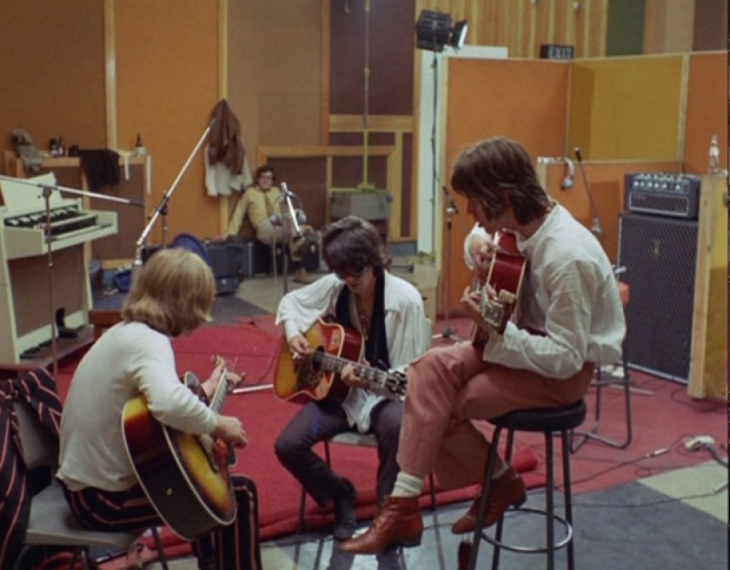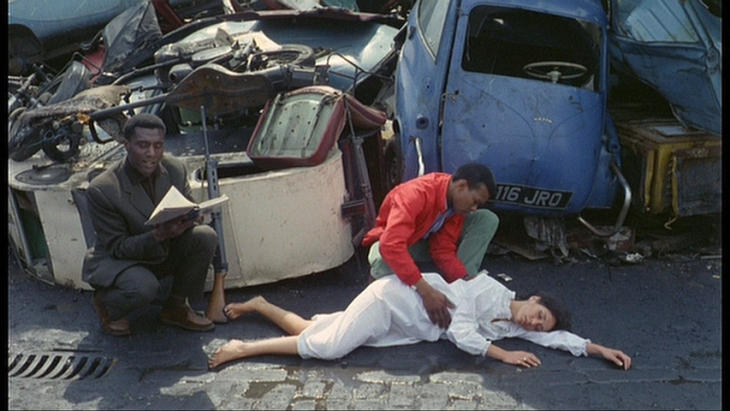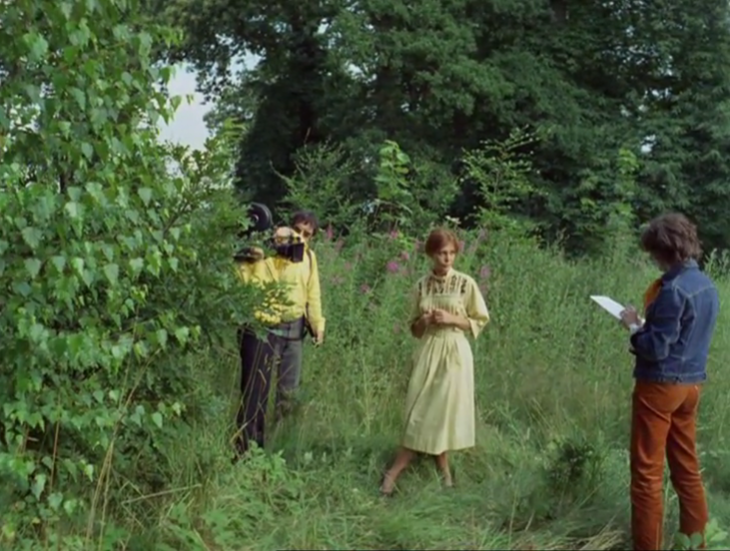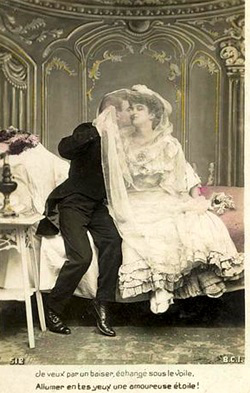
It’s quite possible to be batshit crazy and a profound poet at the same time. Which brings me to Jean-Luc Godard’s 1969 film, “Sympathy for the Devil.” It takes beautiful footage of the Rolling Stones rehearsing the title song at Olympia studios in London, and intersperses it with head-scratching ’60s skit comedy of the Marxist variety. Which, of course, is everybody’s idea of a good laugh. But give Godard and cinematographer Tony Richmond credit: This movie is rapturous to look at. It moves from fascinating to boring to hypnotic, often in the same frame.
The selling point is the Stones, though Godard may have seen them as simply pawns in his propaganda art. Still, it is impossible to resist the way Richmond’s camera moves sinuously through the recording studio, gazing upon each Rolling Stone in his lithe, stunning youth. Mick Jagger’s lippy star power is no surprise, of course. The surprise is the gorgeousness of Keith Richards, all coiled, feral energy and laser-like dedication to his craft. This is no junkie wastrel, but an artist leading his band, a sculptor of chords, not clay. Brian Jones is marginalized, playing acoustic guitar in a walled-off corner, slowly slipping away from the movie as he would do soon in life. Bill Wyman is Bill Wyman, inscrutable as ever. As for Charlie Watts, he is not only one of rock’s premiere drummers and style icons, but he truly missed his calling as the British Buster Keaton. His blank stone face provides joyful laughs every time the camera rests on it.

As the viewer settles into long sequences of the Stones refashioning the song from a slow blues to what one London writer described as “an apocalyptic samba,” Godard cuts away to his ’60s agitprop, giving the filming an intriguing sense of discombobulation. He photographs scenes of actress and then-Godard wife Anne Wiazemsky spray painting slogans such as “Freudemocracy” and “Sovietcong” on buildings across London. He also spray paints all over the audio track, as a narrator reads an noir-meets-Ian Fleming-lite story involving political figures of the day. (It may remind you of the tough-guy poetics of “Alphaville.”) In another segment, a Black Panthers-type group recites revolutionary tracts in an automobile junkyard, while indulging in some seriously racist and derogatory treatment of women. In another, a bookstore seller reads from “Mein Kampf” and requires each buyer to salute him Heil Hitler-style. (Heil-larious.)

But the best cutaway is Wiazemsky walking through a pastoral glade answering either “yes” or “no” to a film crew posing a series of ’60s-like questions about revolution and relationships. Wiazemsky makes each response interesting in the way she modulates her answers, direct but enigmatic. As the characters weave through a wild green park, the scene becomes increasingly narcotic, resembling nothing less than an Impressionist painting brought to life.
“Sympathy for the Devil” is indulgently long, but there is beauty in the meandering. Godard and his camera compositions are the star here, not the Stones. Rock and roll fans won’t learn anything meaningful about the group, except to enjoy the fly-on-the wall dynamics of bearing witness to the long, painstaking process it takes to make a song idea into a work of art. That’s not anything to be unsympathetic about. But the real delight of “Sympathy For The Devil” is the nature of Godard’s game.
Share this:




